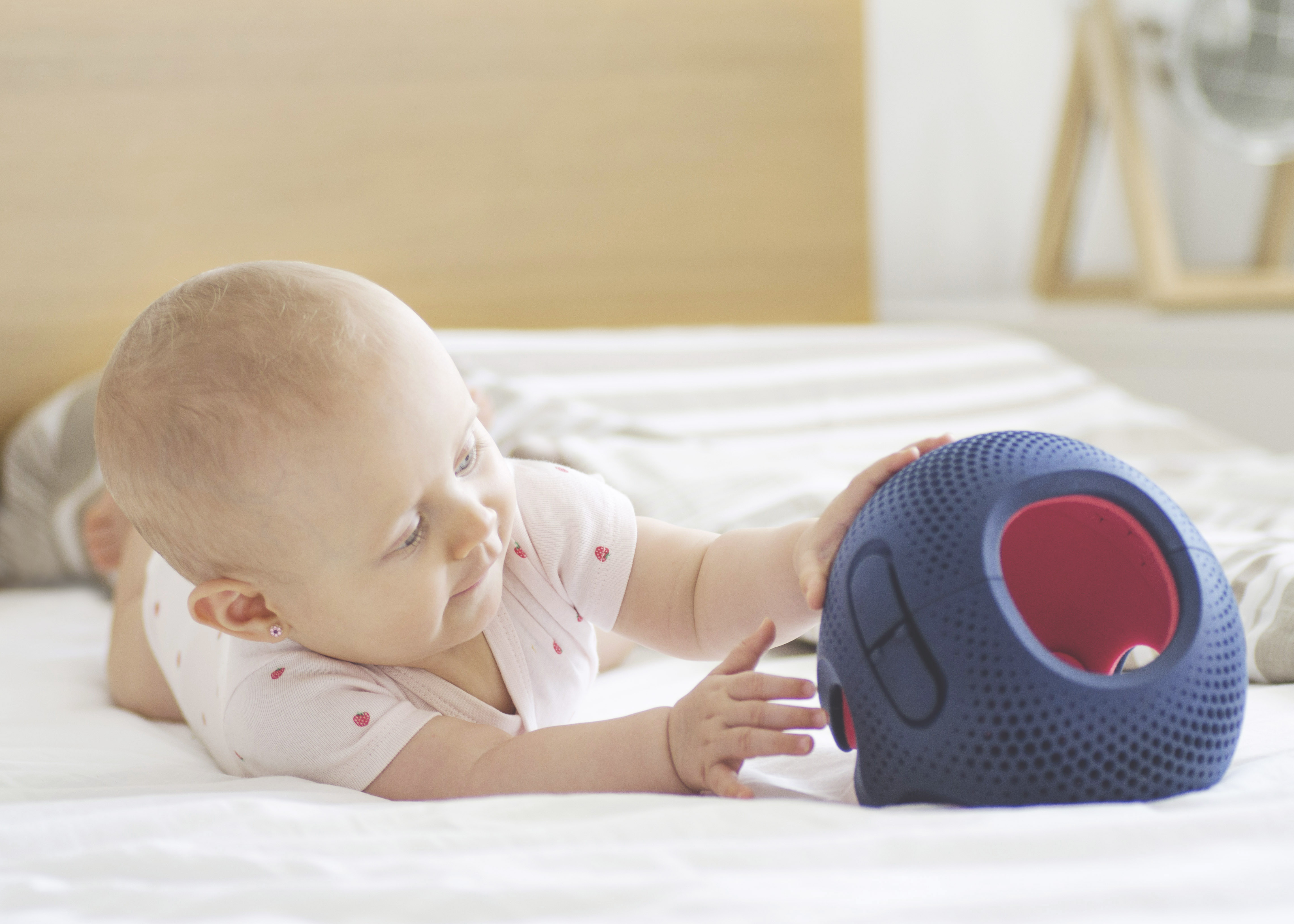
Should Plagiocephaly Be Treated?
Within the UK, there is disagreement over whether or not plagiocephaly should be treated and our opinion is that it depends entirely on parental wishes and the severity of the baby’s flattened head shape. If your baby’s head is severely and visibly flattened and your baby is over five months of age, it’s unlikely that the flattened head will self-correct without action. If correction of the head shape is to occur naturally, it has to happen during the first few months of a baby’s life whilst the skull is still soft and able to change by itself and if this is not happening early, there is a small window of opportunity for parents to bring the shape back to normality before the bones in the skull harden. After this, the only option is open skull surgery which is only recommended in very severe cases.
If untreated, there is risk of a flat head leading to further problems as a child grows. The potential of developing a permanent head shape deformity can cause problems that some parents may not have considered.
A Flat Head Can Affect the Ability to Wear Protective Headwear
A permanent head shape deformity can be problematic as it restricts a child’s ability to wear protective headwear. Hard hats are made to standard moulds, designed and made for average head sizes and shapes. A child with a flattened head will probably not be able to comfortably wear a correctly sized protective helmet and will need to wear a larger sized one to compensate for the head shape. This will compromise the fit and safety of the headwear.
The knock on effect of this is that a child’s ability, and even their desire to take part in leisure activities such as riding a bike, rock climbing, horse riding, or other outdoor activities will be reduced. Loss, or reduction participation in these activities, enjoyed by children as part of their education means that some children who have a flat head shape may not want or be able to safely participate.
These issues in younger life can carry through to teen and adulthood and not being able to find well-fitting standard headwear can also cause problems in later life. Hard hats are a mandatory safety aspect in many areas of work, such as in the armed forces, construction, and emergency services. Being unable to fit into a well-fitting helmet can limit an individual’s ability to work in a significant number of job roles.
How to Prevent this From Happening
There are measures that can be taken to reduce pressure to a flattened head and treat flat head syndrome effectively. For babies between five and fourteen months of age with a moderate or severe head shape flattening, we offer Plagiocephaly helmets which bring gentle correction to the head as it continues to grow. These helmets are light weight and comfortable for the baby to wear. After treatment, some parents even say they miss the helmet as it acts as extra protection when their little one begins exploring and knocking into things!
Given our ability to correct multiple head shape deformities, we are passionate about giving your baby the ability to grow and develop in a way that their flat head syndrome won’t limit their everyday life. If your baby has a flat head and you are unsure what to do, call our team on 0330 100 1800, or book an appointment via our online booking form. We are happy to help and advise!


